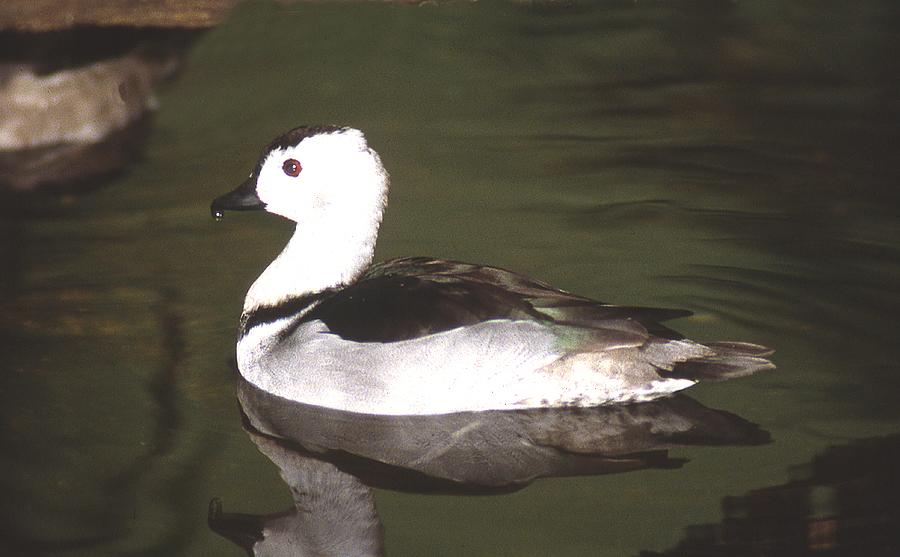
Cotton pygmy goose, or Cotton teal(Nettapus coromandelianus)
Phylum —chordata
Class — aves
Order — anseriformes
Family — anatidae
Genus –nettapus
Appearance
Small individuals of this species are the smallest waterfowl on earth, at as little as 160 g (5.6 oz) and 26 cm (10 in).
The goose-like bill is short and deep at the base. Males have a dark brown forehead and crown and a blackish green broad collar at the base of the neck. The sides of the head and neck are whitish. The back, wing coverts and scapulars are dark brown with green and purple gloss. The female has a duller cap and a brown line through the eye. The collar is replaced by spots and the face is flecked and neck finely vermiculated unlike the male. The non-breeding or eclipse male resembles the female except that it has the broader white wing band. In flight the male has dark wings with white flight feathers tipped in black. The female has dark wings and a white trailing edge to the secondaries and a few inner primaries. They have a red iris and black legs (greenish in breeding males) and bill.
Downy chicks have white superciliary stripes that meet at the back of the head which is black. A short dark eye stripe is present on the whitish face. The upperside of the neck is grey. The mantle is grey brown and two white patches are present on the scapulars. The tail is dark grey to black. The underside is buff.
Habitat
This species is widely distributed across Asia, its distribution extending to Australia. Population move in response to rain and water availability. Some populations disperse further in summer (and are found only seasonally, for instance in Afghanistan). Winter dispersal is also wide and individuals have been seen as far west as Arabia, and Jordan and they are regularly found on islands in the region such as the Maldives and the Andamans.
Behavior
They are usually seen in pairs or larger groups of pairs, roosting and nesting on trees near water.
They fly swiftly, often low over water, and are agile enough to escape falcons.
Diet
Their habitat is still freshwater lakes, where it feeds on seeds and other vegetation, especially water lilies, crustaceans, insects and pond vegetation.
Reproduction
Courtship displays are largely undocumented but a post-copulatory display involves the male arching neck, displaying the white neck feathers and the white wing patches. They pair up during the breeding season which is mainly during the rains (monsoons in June–August India and January to March in Australia) and build their nests mainly in natural tree hollows, such as tree trunks. The males assist in locating nests but incubation is thought to be by the female alone which lays 6 to 12 ivory-colored eggs per clutch. The nest may as high as five meters from the ground and chicks leap off to follow their parents into water.
In captivity
Lifespan is 10-25 years.
The cotton pygmy gooseis difficult to care for and is rarely found in captivity. They are kept in aviaries.
It is more difficult to take care of cotton pygmy goose than other geese of its genus, and can be found outdoors without any harm to health, even in fairly cold weather, with partial freezing of their reservoir. Although they are still considered sensitive to cold.
Special mixtures of seeds and algae, as well as other green food can be feed for a cotton teal. Optimal conditions for breeding are keeping birds of this species in a colony on a large open sunny pond. Nesting boxes of 30x30x48 cm with a 9 cm diameter hole from the top of the box, a frame providing access to the box and the nesting material (sawdust and small shells) inside should be provided.
Adult ducks in the wild shake the water in shallow water to facilitate feeding ducklings, so the key to successful breeding of ducklings in captivity is the presence of a shallow area near the reservoir.
Cotton teals are good parents and are attentive to ducklings, usually raising them until the end of adulthood.
 Russian
Russian
 English
English
























